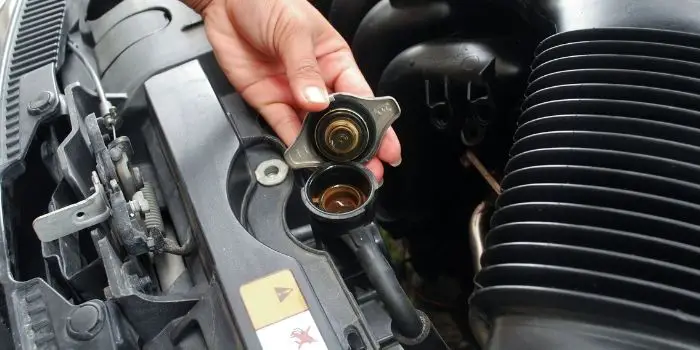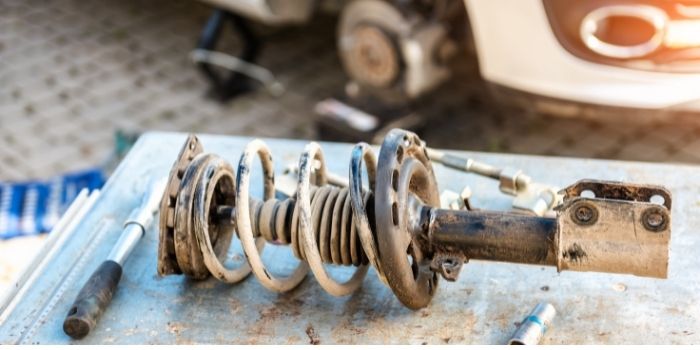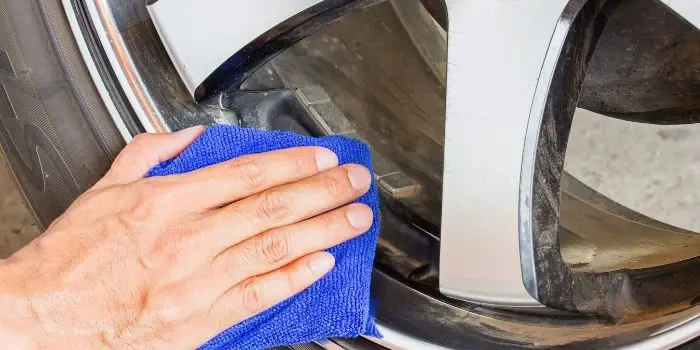When your car begins to overheat or leak beneath the hood, you know you have a radiator problem.
This can happen regardless of how well your car is maintained.
Because it is easily clogged with rust, the radiator is one of those parts that require special or intense cleaning.
If you do not clean this part, your car’s engine may suffer long-term damage.

There are numerous ways to clean them, and one of these unique cleaning methods is done with baking soda.
It’s amazing how good a radiator can be cleaned with baking soda as it can clean the corroded, rusted, and clogged pores of the radiator, leaving it smooth and clean.
Do you want to know how to clean a radiator with baking soda?
Then follow through this guide till the end to find out what does a radiator do, how it gets clogged, and what are steps you need to take to do it yourself:
Table of Contents
What Causes Clogging in Radiator?
In a nutshell, the coolant is cooled by a radiator which keeps the engine cooled.
When a car’s engine is running, it produces a lot of heat then the car circulates the coolant in the engine to prevent overheating.
The coolant transports the resulting heat to the radiator which then circulates air through the liquid, cooling the liquid and exchanging heat with the outside air.
There may be plenty of reasons for getting a radiator clogged or jammed.
Generally, a clogged radiator is typically caused by not proper maintenance of the radiator or cooling system.
Rust and sediments build up in the radiator pipes and fins when the fluid sits for extended periods without being used, or not changing the fluid.
Furthermore, debris and bugs obstruct the airflow, which then causes the overheating of the car.
These issues, if not resolved quickly, can lead to serious issues with the engine.
What are the Symptoms of a Clogged Radiator?
The following signs may indicate that your automobile radiator is blocked and needs to be cleaned.
a) Heating – The most typical indication of a blocked radiator is a high-temperature measurement.
Heat cannot be evacuated efficiently to the outside air as the radiator fails the coolant to not properly circulate inside the engine.
As a result, the engine overheats.
b) Leaks – If the radiator becomes blocked due to rust buildup, it may begin to fracture in certain areas.
These fractures may cause leaks into the radiator.
The leaks worsen with time and might permanently harm the radiator.
c) Poor cabin heating – A car’s cabin heater is dependent on hot fluid going through the heater core and then being blasted into by a blower fan.
When the radiator is blocked, the hot fluid will be unable to travel through the heater core, resulting in a lack of heat within the vehicle.
These are the three most prevalent radiator blockage symptoms.
Other signs include shifting troubles, fluid discoloration, outside fins that are obstructed, a malfunctioning water pump, and a cracked head gasket.
Cleaning a Clogged Radiator with Baking Soda (Step by step)
A step-by-step guide on how to unclog a car’s radiator with baking soda is as follows…
Step 1. Begin with safety in mind
You will need to protect yourself first so use rubber gloves to protect your hands and prevent damage.
Wear goggles to protect your eyes as well, because the baking soda may splatter in your eyes.
Step 2. Make the car blow off some steam
Get your car parked in the shed of your garage for an hour or two to cool down.
Then start cleaning the radiator when the engine is completely cold or at a temperature that allows you to touch it.
Step 3. Drain the coolant from the radiator
Do this once the engine is cold enough to touch.
Then underneath the radiator put a bucket as this is to keep your garage from being soiled.
The bucket will catch any coolant that drips from the radiator. This will help remove any loose dirt from the radiator.
Allow the radiator to seep by opening the drain valve and getting it drained until it is vacant.
Then dispose of it and shut off the valve of the drain.
Step 4. Prepare the Solution
After you’ve thoroughly drained the radiator, you may make a cleaning solution.
1 liter of water should be mixed with 5 to 6 teaspoons of baking soda.
There should be no air pockets in the solution after thoroughly mixing it.
Remove the cap of the radiator and fill the cooling system with the solution and close it
Then heat the engine a little bit after igniting it.
Step 5. Drain the Baking Soda Solution
Stop the engine and let it cool.
When the engine reaches the correct operating temperature, open the drain valve to drain the cleaning fluid.
Flush the radiator with distilled water and also clean the radiator cap with it several times, and at that point, your cooling system has been thoroughly cleaned.
Step 6: Create a new solution of Baking Soda and Vinegar
One-time cleaning with baking soda will not suffice if your automobile radiator was really in bad condition.
You may need to repeat the methods until the radiator is clean.
To eliminate these extra procedures, make a potent radiator cleaning solution by mixing baking soda and vinegar together.
This potent solution is very effective as vinegar acts as an acid to remove stains, baking soda on the other hand acts as a base to soften rusted parts.
As a result, combining vinegar with baking soda yields faster and better results.
To make this solution, combine 7 teaspoons of vinegar, 7 tablespoons of baking soda, and 1 liter of water.
Step 7: Fill the radiator with the solution, heat the engine, and flush it
Follow the instructions outlined above and run this solution into the radiator.
A frothy or bubbly response indicates that the solution is interacting with the rust and debris.
Then start heating the engine to allow the chemical to boil and do its purpose effectively.
After a few minutes, switch off the engine to cool it down and then vacate this solution from the radiator.
Then use distilled water multiple times to clean it thoroughly and after that, you can add a new coolant to the radiator and close the radiator cap.
And there you have it; you just learned the use of baking soda to clean the car’s radiator for the proper functioning of your car.

Based in Orem (Utah) John Paterson graduated from Utah Valley University and has begun writing in 2009. He has a large wealth of experience in writing articles related to cars, automotive repair, wheels, cleaning/maintenance, and much more. He has also written instructional articles in a similar niche for a few online publications as well. Currently, he works as a mechanic in his personal garage shop where he loves serving his countrymen from his heart.




